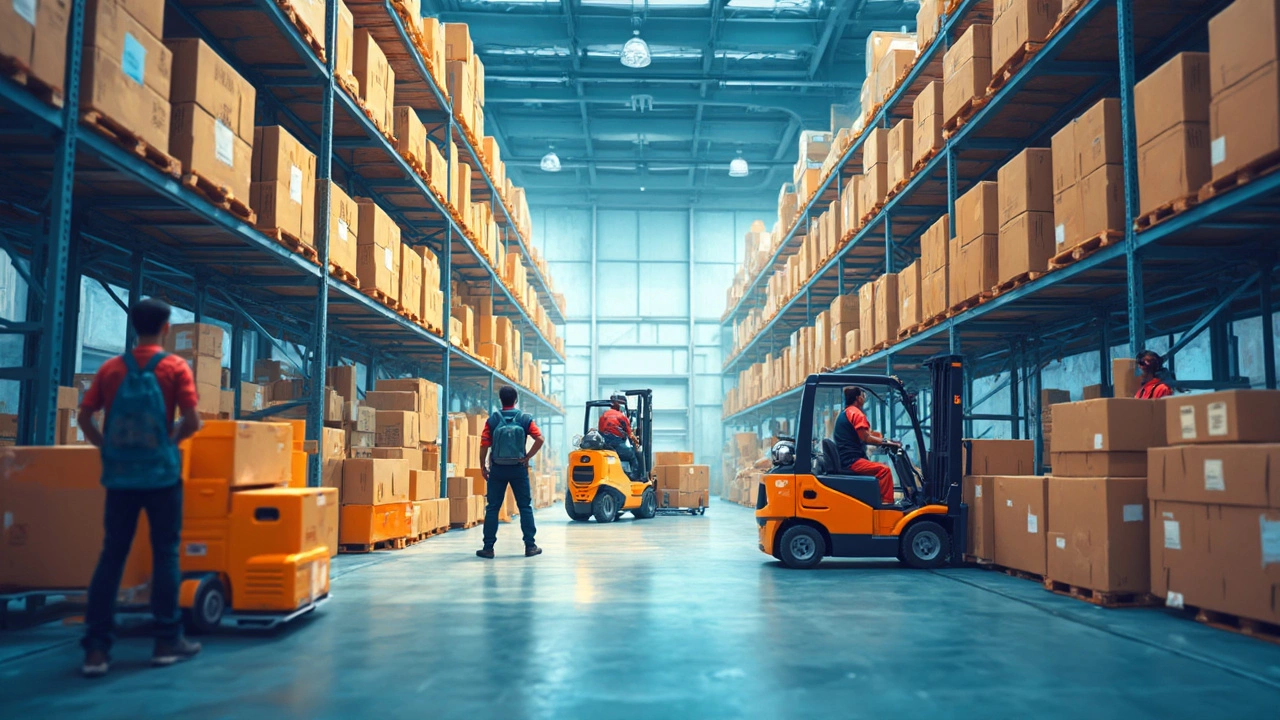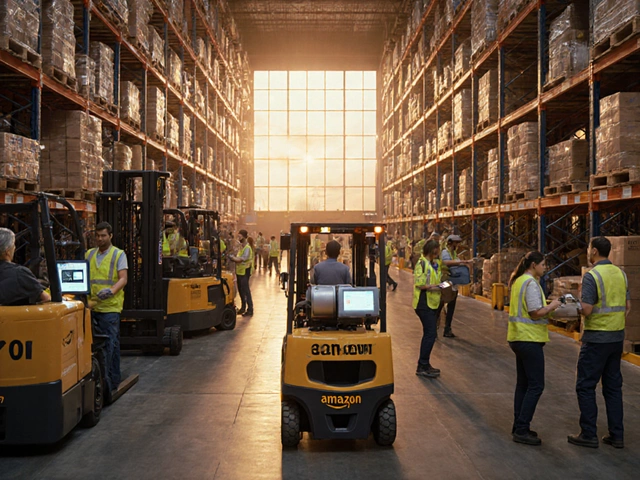Ever wondered how e-commerce stores seem to mint money while you’re still figuring out how they even work? Well, it's not just magic or luck. It's a mix of smart logistics, digital tools, and some clever strategies that keep the money flowing.
First off, let's talk about how these businesses set up their digital storefronts. It’s like having a shop that never closes. This online presence means they're pulling in sales from all over the world, round the clock. Sounds pretty sweet, right? With platforms like Shopify or WooCommerce, setting up shop is easier than ever, and you don't even need to know how to code.
The Digital Storefront
Building a digital storefront is like setting up your shop in the busiest mall on the planet. It's all about positioning your products where millions of potential customers can see them. To get started, platforms like Shopify, WooCommerce, or BigCommerce make it easier than ever. They offer templates, payment gateways, and everything you need without needing to be a tech wizard. Just like in a physical store, you’ve got to lay everything out right.
The design of your storefront matters a lot. A cluttered site with too many distractions can turn customers away faster than you can say 'checkout.' Clean, user-friendly layouts guide visitors smoothly from browsing to buying. Think of this like arranging the aisles in a grocery store—everything should be easy to find, and the path to checkout should be frictionless.
Another biggie is mobile responsiveness. With more than 50% of online traffic coming from mobile devices, if your site isn't up to snuff on phones and tablets, you're missing out on a load of potential sales. So when you're picking a theme, make sure it looks great on all screens.
The beauty of a digital storefront is the endless flexibility to market your own way. Want to run flash sales or offer discounts to lure in bargain hunters? Go for it! Promotion plugins can help you run these deals without breaking a sweat.
And let’s not forget, SEO is the secret sauce here. Keywords, like the ones in your product descriptions and meta-tags, can affect how you show up when someone Googles for what you're selling. Getting a handle on e-commerce SEO might take some learning, but boy, does it pay off when folks find your site organically.
A successful digital store needs a solid CMS—something that lets you add and manage products easily. You want to keep product descriptions fresh and images sharp. It's like updating your window displays to keep folks interested.
Now, let's talk about some real-world data. Check out this table that highlights how e-commerce platforms stack up in terms of customer reach:
| Platform | Monthly Visitors (millions) |
|---|---|
| Shopify | 58 |
| WooCommerce | 13 |
| BigCommerce | 3 |
These numbers aren't just digits—they represent the ocean of buyers you can tap into. The key is setting up your e-commerce shop to catch their interest and hold it.
Warehouse Wonders
When it comes to making money in the e-commerce world, where you store your products is just as important as how you sell them. Think of it as the backbone of your online business. A well-oiled warehouse operation can mean the difference between a satisfied customer and a stack of complaints.
Now, a lot of successful online stores use a system called '3PL' or third-party logistics. It may sound like more jargon, but really, it means hiring someone else to handle your storing, packing, and shipping. Fulfillment centers, like those run by Amazon or FedEx, have turned logistics into an art form, allowing businesses to scale without getting bogged down in the logistics muck.
"The efficiency of your warehouse operations directly affects your bottom line," says logistics expert John Smith. "A streamlined system means faster delivery and happier customers, which translates to repeat business and increased sales."
To maximize efficiency, many businesses use a strategy called just-in-time (JIT) inventory management. This means keeping just enough stock on hand to meet orders without overstocking. It reduces storage costs and keeps cash flow healthy—something every business owner loves.
There are also the technological advances that have brought impressive changes. For example, AI and robotics are increasingly being used to automate processes, speeding up operations and reducing human error. But it doesn't stop there.
| Benefits of Modern Warehousing | Description |
|---|---|
| Cost Efficiency | Reduces overhead costs by optimizing space and labor. |
| Speed | Faster picking and packing through advanced systems improve delivery times. |
| Flexibility | Scales easily with business growth without a hitch. |
By staying ahead in logistics, these companies can deliver faster, satisfy customers, and keep those hard-earned dollars coming in. Who knew that boxes and shelves could be so exciting?

Shipping Secrets
Alright, let's crack open the vault on one of the biggest e-commerce mysteries: shipping. You might think ordering something online is simple, but there's a whole dance behind getting that package to your doorstep swiftly and smoothly.
First off, say hello to fulfilment centers. These are mega warehouses stuffed with products, strategically placed to cut down delivery times. Companies like Amazon have centres scattered all over, which means when you hit 'buy', your book, gadget, or whatever else isn’t traveling from across the country but probably just a few hours away. This spread not only slashes delivery time but also costs.
But it’s not all about location. Shipping costs can leave a nasty dent in the business budget, so smart e-commerce shops partner with carriers. Companies often negotiate rates with shipping giants like FedEx or UPS because, like anything bought in bulk, the more they ship, the cheaper it gets.
Here's a secret weapon: some businesses are using AI to predict shipping needs. AI tools can forecast demand and optimize shipping routes, which helps in squeezing out savings and getting packages out to you faster. Pretty slick, right?
Now, about tracking and transparency. Shoppers want to know where their packages are at all times. Offering real-time tracking not only builds trust but also cuts down on anxious customer emails—"Where's my order?"—because they can see for themselves.
And here’s a neat stat for you:
| Year | Average Delivery Time (Days) |
|---|---|
| 2020 | 5 |
| 2025 | 2 |
This shows how shipping efficiencies have slashed delivery times. Behind-the-scenes logistics make this possible, ensuring customers get their orders yesterday (or as close as possible!).
Data and Upselling Dynamics
When it comes to making more money online, e-commerce pros know that understanding customer behavior is gold. Ever notice those 'you might also like' or 'often bought together' suggestions? That's upselling in action. Using data about what customers have already bought or browsed, online businesses can suggest additional products. It's like a virtual salesperson gently nudging you to consider something extra without being too pushy.
Data isn't just about upselling, though. It helps stores understand trends and patterns. By analyzing this info, stores can stock their warehouses smartly. Imagine knowing exactly when shampoo sales spike or when folks are buying winter coats - that's powerful for both marketing and logistics. Businesses then adjust their strategies, ensuring they have just the right amount of stock when demand hits. Using customer data to track such patterns can transform potential lost sales into big wins.
Here's where having a solid data game pays off: improving customer experience. Data-driven insights allow e-commerce to personalize recommendations for each visitor, making them feel like the store 'gets' them. And happier customers? They buy more.
Some e-commerce stores even segment their customers based on purchase history or browsing behavior. This strategy makes marketing campaigns more targeted and effective. For example, someone who recently bought gardening tools might get a discount on seeds or planters in their email inbox.
This approach doesn't just boost sales but also builds customer loyalty. By knowing their preferences, online businesses cater to their needs more personally, much like your local shop, but on a global scale.





